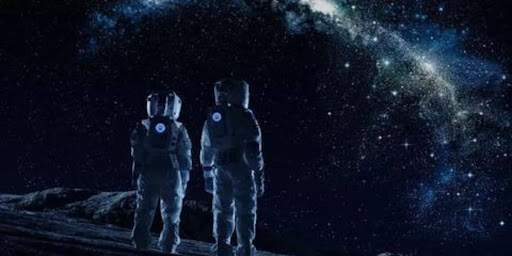Astronomy, something thought impossible in the movies, is now very much a possibility at present. When people go to space, their dreams are no longer to send rovers and robots to distant planets but to send human beings to live on them similar to how human beings live on the moon someday knowledge of the consequences that astronauts face becomes crucial. Astronauts are subjected to various conditions resulting from microgravity and this article discusses five threats and the efforts that are being made to mitigate them to enhance the astronauts’ health during the long missions.
Microgravity Effects on the Human Body:
As you will read, a state of floating challenges practically all aspects of human physiology and many other body-regulated processes. However, there are various fatigue effects for which one of the most severe is bone loss. If there is no gravity constantly tugging at the bones then they are not used as heavily and thus do not need to build up the density. Cosmonauts were reported to lose from 1-1. Per month, it is said to decrease bone mineral density by 5 percent, which culminates in an osteoporosis-like condition. Organs and especially the muscles, especially muscle postural and anti-gravity contracted, also deteriorate rapidly. Skeletal muscle atrophy occurs and impedes the strength of astronauts who experience it, and it also causes issues in balance once they are back on Earth.
The cardiovascular system is another that renews in weightlessness The circulatory system changes to microgravity as well. Gravity ceases to put pressure on the heart, thus the contribution of stroke volume (the quantity of blood that the heart pumps in a single contraction) and overall cardiovascular health diminish. Also, localization of the fluid changes concerning the human body. It moves ‘upwards’ and causes swelling of the face and in extreme cases, affects vision.
Radiation Exposure in Space:
Outside the magnetic field, which protects the Earth’s inhabitants, astronauts are subjected to different kinds of radiation: solar and cosmic ones. Their effects may include short-term effects such as fatigue and nausea whereas the long-term effects may lead to cancer and more. The degree of exposure determines the specific hikes associated with the type of radiation. Space shielding technologies are important for spacecraft so that spaceships remain protected from radiation; however, there is more research to be done on the countermeasures of the influence of lengthy exposure to radiation.
Psychological Challenges of Long-Duration Space Missions:
Another concern is that the mental work done by the astronauts is pretty high when in space. They are restricted to compact modules for a long time, separated from their families and friends, and not knowing what space travel will bring. These aspects can result in loneliness, anxiety, depression, and sleeping disorders. Cosmic voyagers’ psychological stability is managed and controlled through mission planners purposefully recruiting and preparing space travelers. Further, psychotherapists can be consulted on flights, and in-flight calls to families are provided to the crew.
Impact on Astronauts’ Musculoskeletal Health:
As it has been mentioned earlier, free fall API hurts bones and muscles. It results in some musculoskeletal complaints, discomfort, and enhanced risk of fractures on the return to earth. In the same way, for the same counter effect, astronauts are required to undertake vigorous exercise on equipment that replicates the effects of gravity. To augment the prevention of bone and muscle loss, resistance training and artificial gravity such as centripetal acceleration is also being considered.
Strategies for Maintaining Physical and Mental Well-being in Space:
Many countermeasures are being designed to monitor and prevent the physical and psychological tip of astronauts during long-duration space expeditions. These include:
Exercise Programs:
As earlier said, exercise plays a central role in maintaining good bones and muscles. Cosmonauts spend a considerable amount of their day involved in resistance, aerobic exercise, and bone-loading exercises.
Nutritional Management:
Proper and equal nutrition is possible in space due to proper nutrients that can fulfill the requirements of the human body. Astronaut food has to provide necessary nutrients and be palatable to have it consumed by astronauts and hence can only be provided by space agencies.
Artificial Gravity Techniques:
Some of the strategies to mimic gravity include centrifugation; its application provides hope in reducing the impacts of weightlessness on the human body. A kind of experimental study of the device for artificial gravity is to be carried out constantly to design suitable and effective systems on spacecraft.
Psychological Support:
To prepare them psychologically, mission psychologists give astronauts some briefing on how they are going to endure solitude as well as small confined spaces. Besides, customers’ possibility to contact family members, and friends, and have access to mental health counselors during the flight is also essential for their psychological stability.
Controlled Lighting Environments:
One of the most important aspects of the human body is that light helps to control the periods of wakefulness and slumber. They have controlled environments of lighting and simulating the environment of day and night of Earth so that the sleep cycle of the astronauts should not be hampered.
Conclusion:
Space exploration is an expansion of human experience as far as it is possible. Twelve main challenges that are encountered in space environment and corresponding countermeasures must be defined so that people can start living in space. When missions go deeper and for longer periods, the preservation of the crew ‘s physiological and psychological conditions is crucial. Thus, it can be seen that the future of the possibility of traveling to space can also be healthy and sustainable if constant research and innovative solutions are pursued.
Read more articles related to science and technology at Ocere Times.
